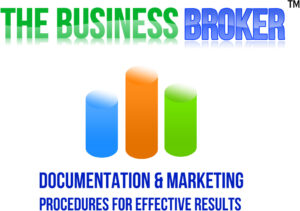Developing a clear understanding of the channels of distribution within the E&S community is a prerequisite to effective procurement strategy. Interrelationships and dependencies exist among members that will affect buying decisions.
Due to competition and market saturation, companies are forced to step up the effort to increase market share. The E&S distribution channel is complex and with the advent of “non-traditional” players the complexity has increased. It should be noted that the channels of distribution can change given the fact that companies continue to seek new ways to reach the end user.
The E&S Product Distribution & Sales Network includes the following players:
- Manufacturers
- Manufacturer Sales Reps
- Foodservice Design Consultants
- Independent Manufacturer Representatives
- Stocking Distributors
- Equipment & Supply Dealers
- Broadline Distributors
- Non-Traditional Distributors
- Fabricator Dealers
- Service Agencies
- End User
Direct and indirect relationships take place between players in various ways.
Manufacturer Sales Reps interact with all players in the supply chain. They may or may not fill the role of the Independent Manufacturers Rep. They are a direct employee of the manufacturer dedicated full time to that product line. In many cases the Manufacturers Sales Manager monitors the activity and performance of the Independent Rep Group and supports them with dealer / distributor and end user product introduction and training.
Foodservice Design Consultants provide consulting and specifying services to end users, owners and operators, architects, and developers. They design and specify foodservice facilities by providing floor plans, elevation drawings, equipment schedules, electrical and plumbing rough ins, ventilation and refrigeration requirements in compliance with national and local codes.
Independent Manufacturer Representatives are independently owned agencies normally representing multiple manufacturer lines and are compensated by commission. They are not employees of the manufacturer. Some representatives inventory product. Most independent rep firms employ outside sales people covering a region or large portion of the country.
Stocking Distributors have exclusive arrangements with the manufacturer, selectively selling to dealers, distributors and end users alike. They quite often handle “specialty” products that require a higher level of technical training to operate and service. In addition they install and repair the equipment as an authorized sales and service agency. Example: Pressure fryers, soft serve machines, and ice makers.
Equipment and Supply Dealers historically have been the primary outlet for the manufacturer. They handle a full line that includes all categories. They will stock items that have acceptable inventory turns and they typically sell to end users. They can and do offer discount programs to resellers.
Broadline Distributors have evolved over time to become a major supplier of E&S products. A convenient source to the end user, E&S has evolved naturally to the broadliner. Although they have the buying power to sell a full line; E&S products must conform to the broadliners method of distribution and inventory control. Case goods such as disposables, china and glassware are adaptable; however, heavy equipment products are normally drop shipped direct to the end user without service. DSR’s have struggled with the added time requirements to sell E&S and often lack the training and expertise to improve sales or create profits in this category.
Non-Traditional Distributors include Wholesale Clubs, Buying Groups and Internet Sales Organizations. The typical wholesale club that primarily caters to the retail market has some impact but is difficult to quantify. Commercial Foodservice Clubs have emerged with a wholesale club strategy offering equipment, supplies and food products. Internet sales organizations have made a big impact driving prices down and significantly affecting traditional distribution channels. Buying Groups have been strongly supported over the years by the distribution community. This trend is likely to continue and new buying group alliances will emerge creating additional opportunities that will benefit the end user.
Fabricator / Dealers are focused on contract sales combining manufacturing and finished goods (buy outs). A competitive advantage can be achieved by combining low margin buy out items with high margin fabrication. The cost advantage realized can facilitate additional services such as consolidation, delivery and installation into one contract package theoretically creating a lower total cost. The trade off is that they become a competitor of the dealer/distributor community; sacrificing a significant share of the market.
Service Agencies work directly with the manufacturer to resale parts and provide service. They also provide service to all the other players. Some service agents fill the role of Stocking distributors and vise versa, most notably when it comes to soft serve machines, ice makers and other specialty products.
End Users buy direct from manufacturers based on volume commitments. These end users tend to be chain operators who prefer to have total control and employ their own in house services that distributors typically provide. Direct manufacturer sales are the exception rather than the rule.
Obtain equipment recommendations, sourcing, and basic information to help you qualify your buying decision by going to restaurantvalues.net





